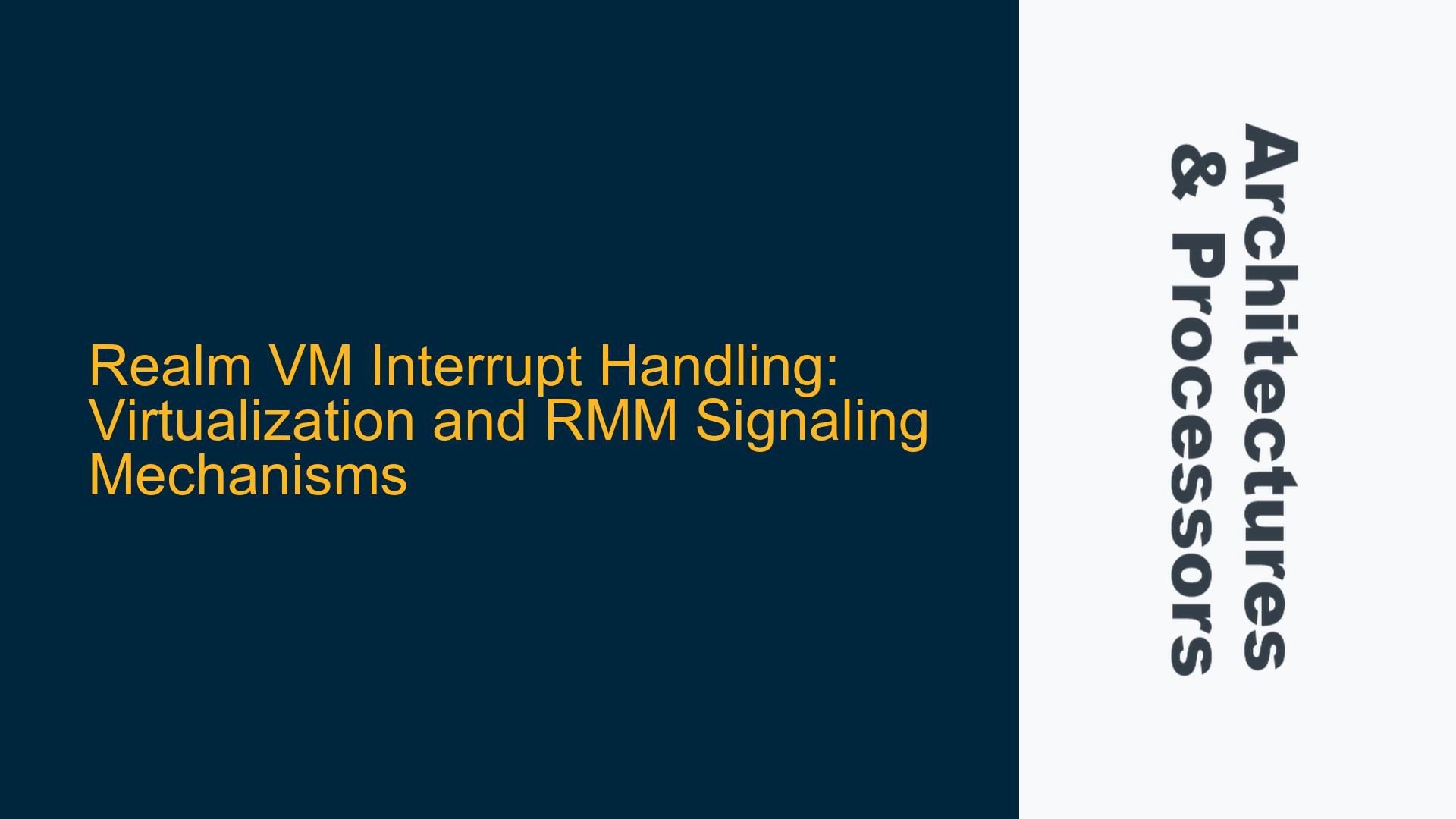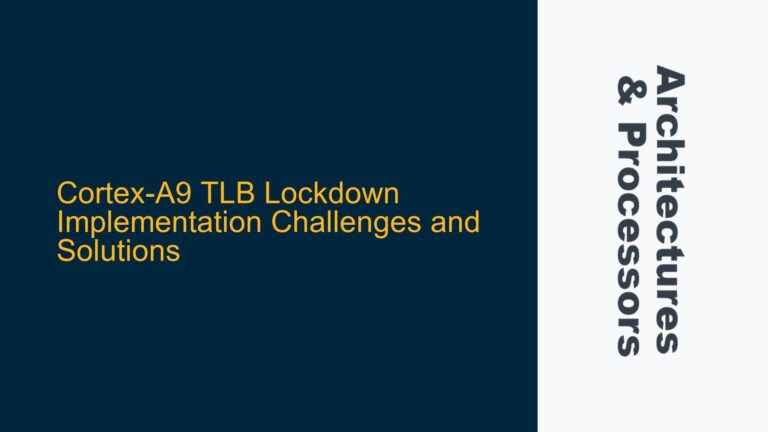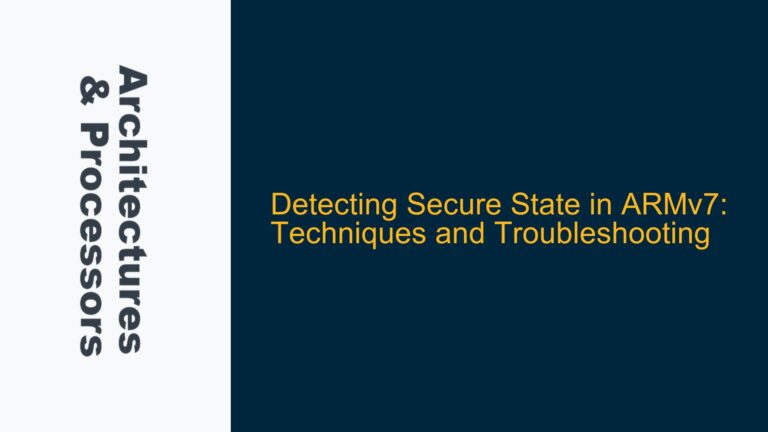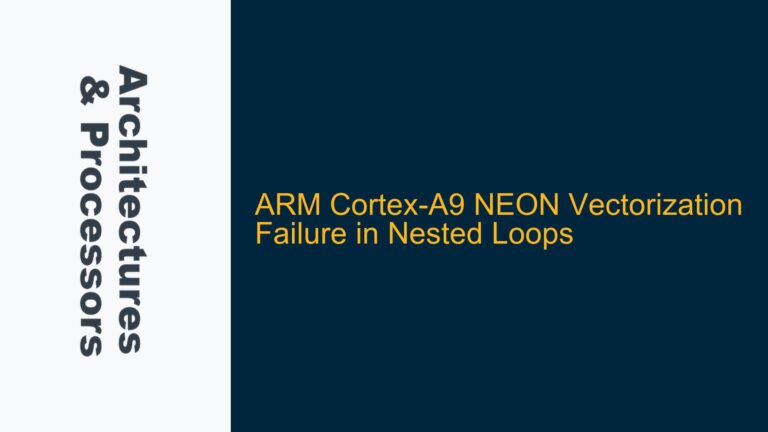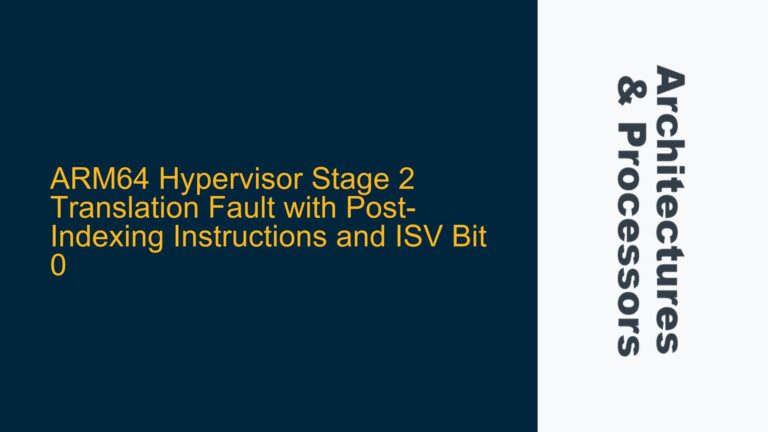ARM Realm VM Interrupt Virtualization by Hypervisor
The ARM Realm VM (Virtual Machine) architecture introduces a sophisticated mechanism for handling interrupts, which is crucial for ensuring secure and efficient virtualization. In the Realm VM context, interrupts are not directly handled by the guest operating system running within the Realm. Instead, all interrupts are intercepted and virtualized by the hypervisor, which then communicates with the Realm Management Monitor (RMM) to signal these interrupts to the Realm. This design is integral to the security model of ARM’s Confidential Compute Architecture (CCA), where the hypervisor acts as a mediator to enforce isolation and control over hardware resources.
The hypervisor virtualizes interrupts by trapping all physical interrupts generated by the hardware. These interrupts could originate from various sources, such as timers, peripherals, or external devices. Once trapped, the hypervisor determines the appropriate Realm VM to which the interrupt should be routed. This decision is based on the interrupt mapping configuration and the current state of the Realm VM. The hypervisor then packages the interrupt information into a command that is passed to the RMM. The RMM, which operates at a higher privilege level than the Realm VM, is responsible for delivering the interrupt to the Realm VM in a controlled manner.
This virtualization process ensures that the Realm VM remains isolated from the physical hardware, preventing direct access to interrupt controllers and other sensitive resources. However, this indirection introduces complexity in the interrupt handling flow, particularly in terms of latency and synchronization. The hypervisor must efficiently manage interrupt routing while minimizing overhead, and the RMM must ensure that interrupts are delivered to the Realm VM without compromising the security or integrity of the system.
Hypervisor Interrupt Trapping and RMM Command Formation
The core issue in understanding Realm VM interrupt handling lies in the detailed mechanisms of hypervisor interrupt trapping and RMM command formation. When an interrupt occurs, the hypervisor’s interrupt trapping mechanism captures the interrupt before it reaches the physical CPU. This trapping is achieved through hardware-assisted virtualization features, such as ARM’s Generic Interrupt Controller (GIC) virtualization extensions. The GIC allows the hypervisor to configure virtual interrupts for each VM, including Realm VMs.
Once the interrupt is trapped, the hypervisor must determine the appropriate action. This involves identifying the source of the interrupt, mapping it to the corresponding virtual interrupt for the Realm VM, and constructing a command for the RMM. The command typically includes details such as the interrupt type, priority, and target Realm VM. The hypervisor then invokes the RMM through a secure monitor call (SMC), passing the command as an argument.
The RMM processes the command and delivers the interrupt to the Realm VM. This delivery involves updating the virtual interrupt state in the Realm VM’s virtual GIC and signaling the interrupt to the guest operating system. The guest OS then handles the interrupt as it would in a non-virtualized environment, but with the added assurance that the interrupt has been securely vetted by the hypervisor and RMM.
Optimizing Interrupt Handling for Realm VMs
To address the challenges associated with Realm VM interrupt handling, several optimizations and best practices can be implemented. First, the hypervisor should be configured to prioritize interrupt handling for Realm VMs, ensuring low-latency delivery of critical interrupts. This can be achieved by tuning the GIC virtualization settings and optimizing the hypervisor’s interrupt routing algorithms.
Second, the RMM should implement efficient command processing mechanisms to minimize the overhead associated with interrupt delivery. This includes using batch processing for multiple interrupts and leveraging hardware features such as the GIC’s virtual priority drop and deactivation support. Additionally, the RMM should provide robust error handling and recovery mechanisms to ensure that interrupt delivery failures do not compromise the stability of the Realm VM.
Finally, the guest operating system running within the Realm VM should be optimized to handle virtual interrupts efficiently. This involves configuring the guest OS’s interrupt handling routines to account for the additional latency introduced by the hypervisor and RMM. The guest OS should also be aware of the virtualized nature of its interrupts and avoid making assumptions about the underlying hardware.
By carefully addressing these aspects, developers can ensure that Realm VM interrupt handling is both secure and performant, enabling the effective use of ARM’s Confidential Compute Architecture in a wide range of applications.
